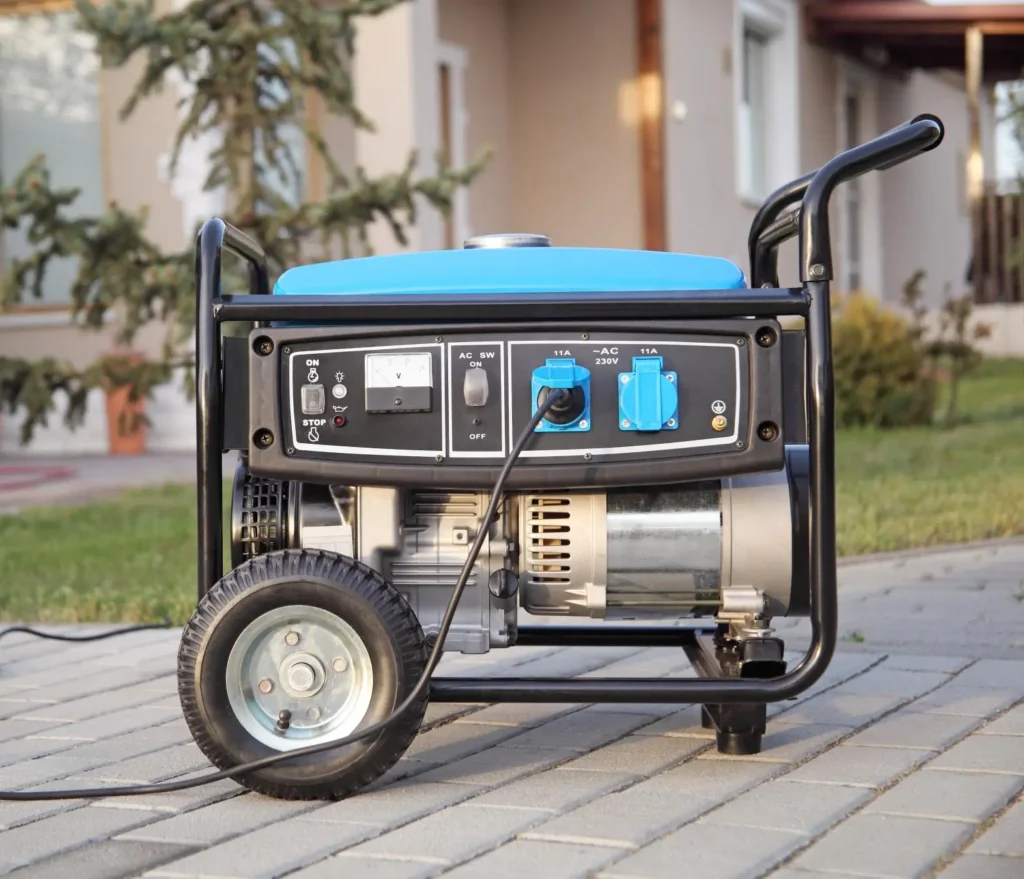Quel est le risque pour vous ?
Le mois de juin marque le début de la saison des ouragans. exceptionnellement destructeur et des millions d'Américains se préparent à protéger leur famille et leurs biens contre les éléments. Mais beaucoup d'entre eux ne réalisent pas qu'un élément clé de leur plan d'urgence peut présenter des risques tout aussi mortels qu'un ouragan.
Les générateurs portables sont devenus l'outil de prédilection pour atténuer les inconvénients des pannes de courant liées aux tempêtes, mais lorsqu'ils sont mal utilisés, ils peuvent constituer un danger mortel.
Les générateurs produisent de l'électricité, mais émettent également du monoxyde de carbone, un tueur silencieux incolore et inodore qui n'alerte guère les victimes. Il existe des symptômes d'empoisonnement au CO - maux de tête, vertiges, nausées, vomissements et confusion - mais ils sont similaires à ceux d'un rhume ou d'une grippe et peuvent être ignorés jusqu'à ce qu'il soit trop tard.
En chiffres
Survolez chaque statut ci-dessous pour en savoir plus sur les risques posés par une mauvaise utilisation des générateurs portables.
Vous pouvez prévenir l'empoisonnement au CO
A rapport L'année dernière, une étude réalisée par UL Standards & Engagement a révélé que 29 millions de générateurs étaient utilisés aux États-Unis, mais que 62% des propriétaires ne savaient pas qu'ils pouvaient être à l'origine d'une exposition au CO.
Les centres américains de contrôle et de prévention des maladies estiment qu'au moins 430 Américains meurent chaque année d'une intoxication involontaire au CO et que 50 000 d'entre eux nécessitent des soins d'urgence.Une analyse estime à plus de $1,3 milliard d'euros par an le coût national des frais d'hospitalisation, de la perte de revenus et d'autres dépenses. L'année dernière, deux personnes sont décédées et 400 se sont rendus aux urgences rien qu'au Texas à la suite de l'ouragan Beryl.
Le bilan est aussi stupéfiant qu'il est possible de le prévenir.
Que vous viviez dans les zones d'ouragans des côtes de l'Atlantique ou du Golfe, dans les allées de tornades du centre du pays ou dans l'Ouest, sujet aux incendies de forêt, il est essentiel d'apprendre à utiliser un groupe électrogène en toute sécurité avant qu'une situation d'urgence ne survienne.
- Recherchez des générateurs conformes à la norme UL 2201.: Alors que les anciens générateurs n'ont pas de protections intégrées, les nouveaux modèles construits selon les normes de l'Union européenne (UE) ne sont pas protégés. Norme UL 2201 définis par l'ULSE se caractérisent par des émissions de CO considérablement réduites et doivent comporter un capteur de CO intégré qui arrête automatiquement le moteur si des concentrations dangereuses sont détectées. A étude du CPSC a constaté que la quasi-totalité des 511 décès liés à des générateurs figurant dans sa base de données aurait pu être évitée si les appareils sont conformes à la norme UL.
- La détection, c'est la prévention: Quel que soit le type de générateur utilisé, une ligne de défense essentielle consiste à disposer d'un détecteur de CO à proximité. Des détecteurs de CO à brancher aux détecteurs à piles, il existe plusieurs options peu coûteuses et pratiques qui déclenchent une alarme stridente avant que le tueur "silencieux" n'atteigne des niveaux empêchant toute réaction de la part de quelqu'un. Les détecteurs de CO conformes aux normes ULSE Norme UL 2034 peuvent être facilement trouvés dans la gamme $20 et devraient être utilisés chaque fois qu'un générateur est en fonctionnement et fournissent également une protection tout au long de l'année contre le CO provenant d'une chaudière à gaz, d'un chauffe-eau ou d'un autre appareil à combustible qui ne fonctionne pas correctement.
- Ne pas confondre les détecteurs de fumée et les détecteurs de CO: Bien que les détecteurs de CO soient largement connus, leur utilisation est loin d'être aussi répandue que celle des détecteurs de fumée. De nombreuses personnes pensent que les détecteurs de fumée protègent également contre le CO, mais ce n'est pas le cas, à moins qu'un détecteur combiné spécifique ne soit utilisé.
Cette année, la saison des ouragans intervient juste après l'arrivée de l'ULSE. a publié un nouveau rapport analysant les efforts réglementaires de chaque État, les résultats sanitaires et la sensibilisation du public à la prévention des intoxications au CO. Les résultats montrent une grande disparité entre les États qui sont à la pointe de la sécurité en matière de CO et ceux qui sont moins performants. Parmi les États exposés aux ouragans, l'Alabama a obtenu la meilleure note globale, grâce notamment à l'obligation d'installer des détecteurs de CO dans la plupart des maisons et des appartements, et à un score élevé en matière de sensibilisation du public. D'autres, en revanche, comme le Texas et la Louisiane, n'en sont qu'aux "premiers stades" des mesures de sécurité contre le CO, et le rapport recommande qu'ils rendent obligatoires les détecteurs de CO et qu'ils intensifient la sensibilisation du public.
Grâce aux campagnes agressives menées par les gouvernements nationaux et locaux, il est rare de voir une nouvelle maison ou une nouvelle entreprise sans détecteur de fumée. Il s'agit là d'un modèle pour sensibiliser aux dangers du CO et rendre les détecteurs de CO aussi universels que les détecteurs de fumée, que ce soit lorsque des générateurs sont utilisés ou tout au long de l'année.
En attendant, alors que les Américains se préparent aux dangers de la saison des tempêtes 2025, il est important de se rappeler le danger caché des générateurs et du CO, et comment un investissement modeste dans un détecteur de CO combiné à la connaissance des pratiques de sécurité de base peut sauver des vies.
Sayon Deb est directeur de Primary Insights chez UL Standards & Engagement, une organisation de défense de la sécurité.
